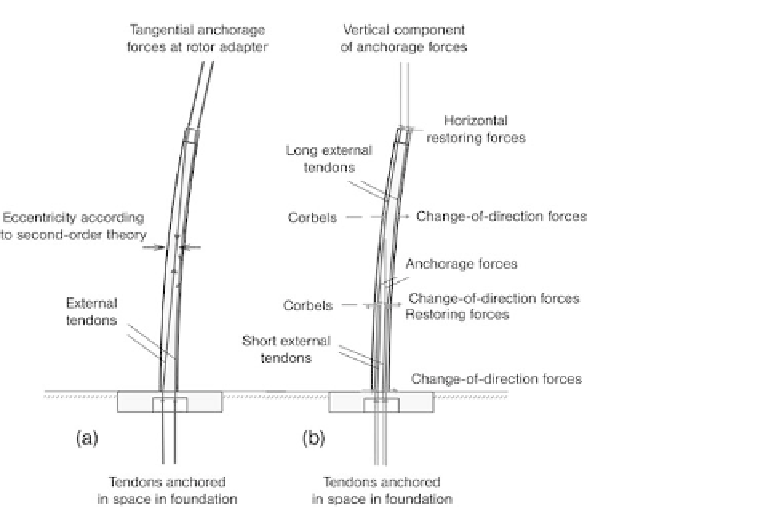Environmental Engineering Reference
In-Depth Information
Fig. 4.11 a) Actions of exposed external prestressing tendons, b) actions of corbel-guided staged
tendons
full height of the tower (for examples see [8]), then the tendons on the windward side
coincide with the chord, whereas those on the leeward side touch the inside of the tower
shaft (see Figures 4.10 and 4.11a).
The positioning of the tendons can be improved, however, by building corbels on the
inside of the tower shaft in such a way that the tendons follow a polygonal line in the
deformed loadbearing structure without touching the inside of the tower shaft. This
results in restoring forces and second-order change-of-direction forces with associated
friction forces, for which the corbels must be designed (see Figure 4.11b).
Comparing Figure 4.11a and b it is easy to see that when the prestressing tendons are
guided over corbels, which are positioned at the third-points at least, the prestressing
force does not have to be applied to the action side. Instead it is sufficient - as with
grouted post-tensioned tendons - to consider the action of the concentric prestress as an
axial compressive force in the concrete cross-section on the resistance side, for
example in the bending moment-curvature relationships M (
k
), see Section 3.3.3.
4.5
Design of onshore wind turbine support structures
4.5.1 Total dynamic analysis
The following points characterise the total dynamic analysis of a wind turbine support
structure:
- The dynamic simulation is carried out in the time domain and on the basis of elastic
theory.

